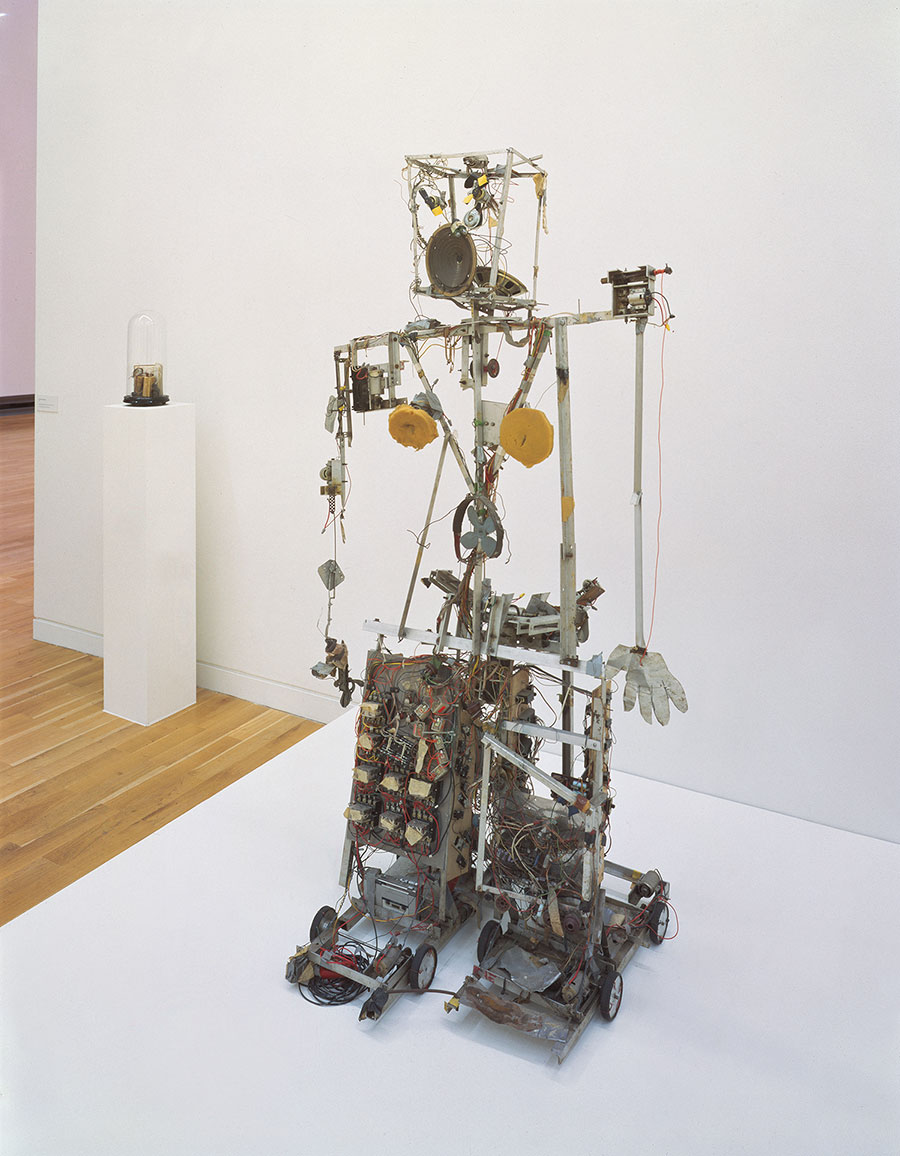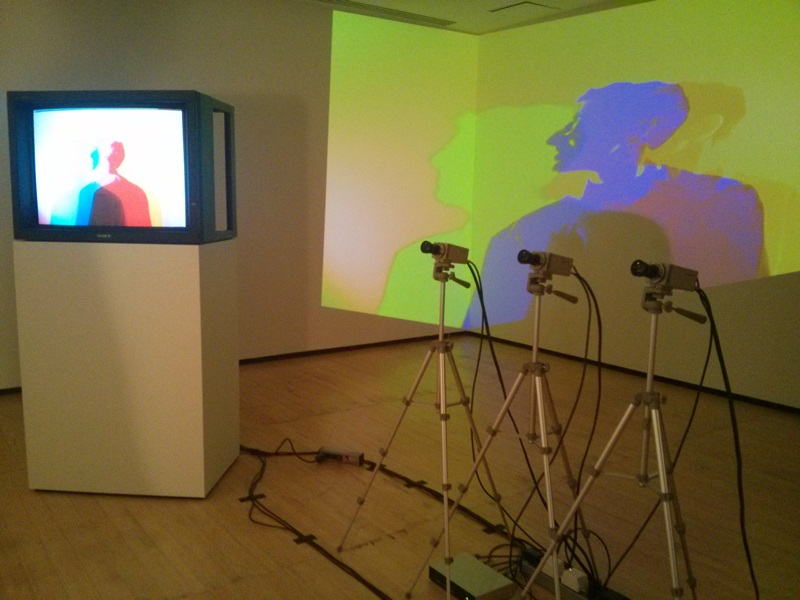Newly launched by ADHT’s Insights Magazine, Notices is a multi-part series which features reviews and commentaries produced by students currently enrolled in one or more of the school’s ongoing semester courses. Migrating images, ideas, and conversations in and out of the Parsons community everyday, students offer a way of seeing and engaging with multiple worlds at the same time. Their education–rather than being limited to the classroom–is diffusive and fluid, their curiosity, roaming and magnetic.
The third installment can be found below. Click here for the first and here for the second.
The Father of Video Art
Review Nam June Paik: Becoming Robot
On view at The Asia Society, September 5, 2014 – January 4, 2015
by Mencia Zagarella
Becoming Robot, currently on view at the New York City’s Asia Society, presents the technologically pioneering work of Korean-American artist Nam June Paik. Although the quantity of works remains slim, the range of the exhibition, which takes place on the second and third floors of the small gallery, involves a vast range of forms: documentaries, written and verbal statements, interactive camera and projections, and sculptures. Confronted with the reality of modernity and technology’s rapidity, the viewer encounters objects that were once technologically advanced phenomena and are now melancholic stills. Interestingly, the result is that the works and ideas of Paik—once ahead of their time—seem archaic in the context of the current technological situation.
According to curator Michelle Yun, Paik is considered the father of video art. The artist was trained in Korea as a classical pianist and was introduced to electronic art when he attended the Munich University in Germany to complete his musical studies and met with other musicians, such as John Cage, Joseph Beuys, and Wolf Vostell who were then making experiments in conceptual art. When Paik moved to New York in 1964, he joined the interactive art-media group Fluxus and began to make collaborative works with the cellist Charlotte Moorman. While living in the United States, Paik gave birth to an abundance of pioneering works in the field of performance art, installation art, video art and technology as a whole. Some people even believe that when he used the term “technology super highway,” he paved the way for what is now the information super highway, pre-envisioning the nature of 21st century technology.
Even for someone who has never seen Paik’s work in person, it is clear through the combination of works and documentation provided that the exhibit is curated to ground Paik’s position as the father of video art and also as a seer of the capabilities of technology. Since the works depend so much on their context—and even more so on the animation and interaction of the works with the artist himself and with the people who viewed it in its original form—it is difficult to envision what the works are intended to be like. This is especially evident in one of the star pieces of the show, “K-456,” which used to be a walking compilation of cables and boxes controlled by Paik wirelessly. Paik created the work to be a grotesque but friendly technologically sophisticated toy. “K-456” had the capacity of walking, waving, and broadcasting JFK’s inaugural speech while excreting beans every once in a while. It used to be a conceptual and high-tech masterpiece for its time. In order for one to experience “K-456” as such, one needs to pay more attention to the screened documentation of what the robot used to be than to the robot itself. This gives rise to some doubts about the ability of Paik’s work to endure the passage of time without the aid of newer technology (such as that required for the re-screening of documentation of the work.) This question about Paik’s work then gives rise to the question of durability itself, shedding light on the uncertainty of current technology’s future.
There are other works in the collection, however, that stand strong to the test of time. The interactive piece “Three Camera Participation/Participation TV” is located in a gallery of its own. It consists of three cameras, a video monitor and a projector that, when intervened by the presence of a subject in front of the cameras, break up the figure into a magenta, yellow, and cyan simplification. Once the subject exits the camera eye, the piece again becomes mute and colorless. “Participation TV” is unlike “K-456” in that it is still idiosyncratic and alive; yet very much like the latter, it depends on human interaction for the piece to be actualized. Exploring the human-technology relationship is a mastery in itself, thus establishing Paik’s title as a technological and artistic innovator.
——————————————————————————————————————
Mencia Zagarella is currently a student in The Moving Image, taught by Professor Margot Bouman.




























